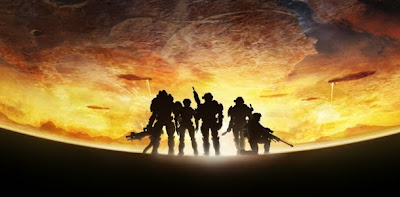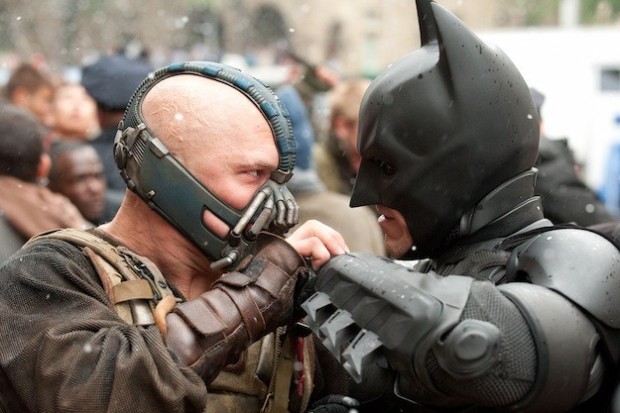Halo: Reach review

At the Macworld Expo 1999, a new game for Windows and Macintosh was announced by Apple chief Steve Jobs. It would be a first person action game with sci-fi elements, made by a developer called Bungie who had only released a handful of games prior. That little game’s name was Halo, and eleven years later it stands as one of the most popular franchises in media history, having sold an immense 30 million units worldwide.
Halo 3 was released in 2007, effectively wrapping up the main story that began with 2001’s Halo: Combat Evolved, yet the brand has continued to live on through various media, comics and novels, as well as the most recent game, spin-off Halo: ODST. Halo: Reach is the final game by original designers Bungie, and is seen as something of a swansong, especially as it acts as a prequel to the first game. Yes, it’s the dreaded ‘P’ word, but luckily Halo: Reach is more Revenge of the Sith* than Phantom Menace.
Within the Halo universe, the Fall of Reach was the largest battle in the war between the humans (goodies) and the covenant (bad alien types). Players assume the role of Noble Six, a super-soldier on the human side who finds himself caught up in the rapidly escalating engagement with the covenant. Along with the other members of Noble Team, Six will embark on a journey with the very survival of the human race at stake. Storytelling has never been the Halo series’ strong suit, but Reach benefits from the most straightforward plot since the original game, and a genuinely stunning ending.
So what is new? Unsurprisingly it’s a case of evolution rather than revolution, but with a series as finely tuned as Halo that is no bad thing. The same core first person action remains, with a strong emphasis on online multiplayer. More attention has been paid to the single player campaign this time, acting almost as a greatest hits compilation of the best levels of the series, with one stand-out mission introducing space-combat for the first time. Surprisingly nuanced for such a small detour within the game, it actually reminded me how long it has been since there was a great space shooter released on consoles (why gamers are still waiting for a remake of X-Wing vs Tie Fighter heaven knows).
As mentioned earlier, Noble Six is part of a larger team and so most of the missions feature some level of assistance from your comrades. These do a nice job of assisting without getting in the way too much, and there is always the option to run ahead and fight by yourself anyway. Co-op play for up to four people is also featured, but sadly everyone still plays as a Noble Six clone rather than filling out the other members of the team.
Halo 3 introduced single-use special abilities such as bubble shields and energy sappers, and Halo: Reach features its own spin with customisable armour abilities. These are power-ups that temporarily grant the player a new ability, such as invisibility or sprinting, before needing to charge for re-use. They add a new tactical element to the gameplay, though the sprint function can encourage you just to run past difficult sections. The potential for multiplayer is huge though, with the Total Recall-style hologram sure to have many a player sending profanities via Xbox Live.
All of these abilities will come in useful too, because Reach features the hardest campaign yet in a Halo game. There is no cheating when playing in a group either, because the difficulty ramps up the more people are playing. Finishing on Legendary difficulty is going to be a challenge for only the truly hardcore. It doesn’t help that you are going to be frequently distracted by composer Marty O’Donnell’s incredible soundtrack, which stakes it’s claim instantly as one of the greatest video game soundtracks of all time. At once haunting and exhilarating, it is a marvel to listen to and fully deserves a stand-alone CD release.
Once you are done with the single player (roughly six hours on the first run through) you have an immense and fully equipped multiplayer suite to enjoy. Old favourites such as slayer and capture the flag are present and correct, with the firefight mode introduced in Halo: ODST now adding features such as match-making to make it live up to it’s potential. Getting a match up and running is again idiot-proof thanks to Bungie’s peerless match-making system, and players can now choose a variety of criteria depending on who they would prefer to play against. Don’t feel like being trash-talked by a thirteen year old American? Just select the option to avoid profanity and you can play away is peace.
One nice element is the ability to customise Noble Six’s appearance, with this reflected both in multiplayer and single player. While it can be a bit comical to play through the undeniably bleak campaign in luminous pink armour, it’s a fun touch and helps to link the single-player and multiplayer together.
Then there is the forge mode. Essentially allowing players to build their own levels, this intuitive editor has been ramped up significantly, now allowing up to eight people to build at the same time. It’s going to be exciting to see what the more creative parts of the community come up with in the coming months.
Halo: Reach is never going to win any new fans to the series, but for fans who have spent too many hours over the past honing their battle rifle skills it will be a fitting goodbye to Bungie. Few games have ever been so complete, with a rich and exciting single player campaign backed up with a comprehensive multiplayer package thats longevity will be measured not in months, but years. Where the series will go from here only Microsoft can currently say, but 343 Studios (tasked to continue the Halo franchise) will have some huge shoes to fill.
* Unbelievably my spell-checker failed to recognise the word ‘Sith’. Has Star Wars terminology not become part of the English language by now?


Comments
Post a Comment